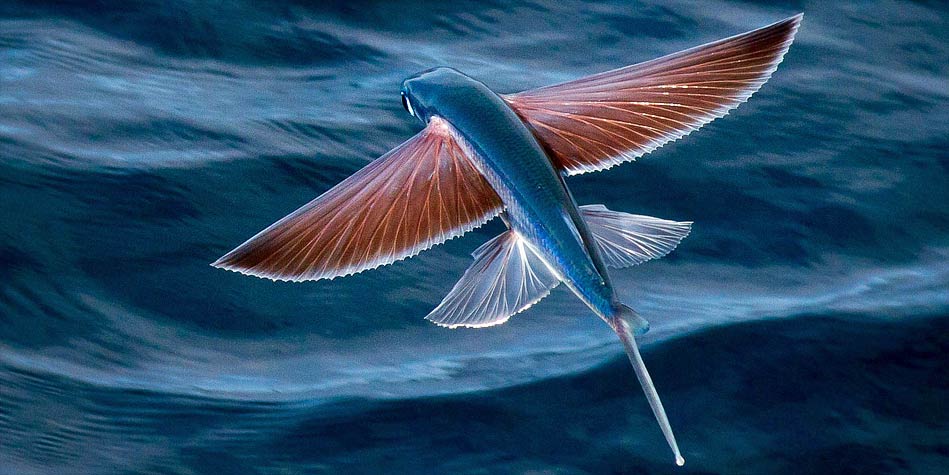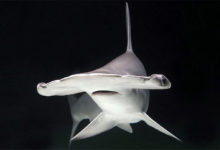Flying fish (Exocoetidae)
In each group of animals, we can find a species that behaves completely differently from the others. However, all boundaries have crossed the fish with “wings”, thanks to which they fly over the water surface like gulls.
If you have watched the film entitled “Life of Pi” you will certainly remember the scene during which flying fish fly over the boat, while the Bengal tiger catches them in its open mouth.
Today we will want to explain to you the phenomenon of these fish and answer the question: “Why do fish have wings?” 🙂
Life, as we know, came out of the water, some fish watching the birds thought to themselves, why not to fly like that… 🙂
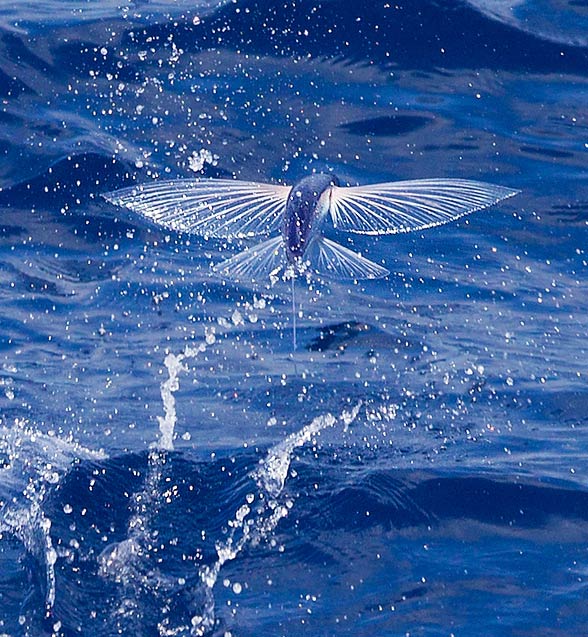
Classification
- Kingdom: Animalia
- Phylum: Chordata
- Class: Actinopterygii
- Order: Beloniformes
- Suborder: Belonoidei
- Superfamily: Exocoetoidea
- Family: Exocoetidae
- Genera
- Cheilopogon
- Cypselurus
- Exocoetus
- Fodiator
- Hirundichthys
- Parexocoetus
- Prognichthys
- There are 64 species
When did they appear on Earth?
The oldest known fossil of flying fish, Potanichthys xingyiensis, dates back to the middle Triassic, 235-242 million years ago. However, this fossil is not associated with the current flying fish, which evolved independently about 65 million years ago.
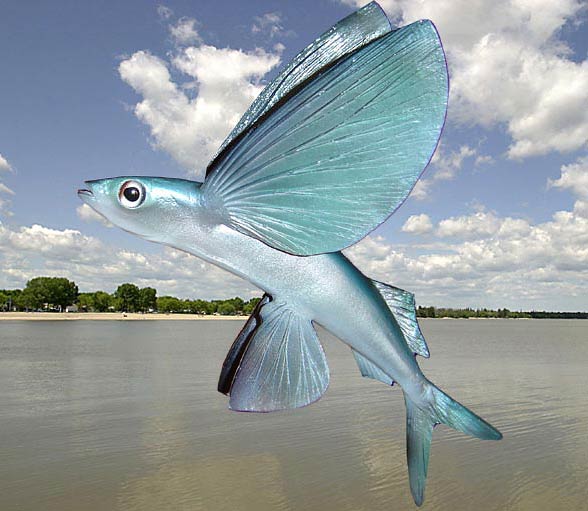
Occurrence and characteristics
They are found in all oceans, especially tropical and subtropical waters. The most characteristic feature of the flying fish is the unusually large pectoral fins, which allow passage over the surface of the water. The shape of the body resembles a torpedo and the tail allows to develop very high speed under water, thanks to which they easily fly above its mirror.
Flying fish are able to perform high glide flights, during which their pectoral fins develop to form a kind of wings. In addition to their extremely useful pectoral fins, forked tail fins, the lower flap of which is longer than the upper flap, help them in flight. Many species also have grand abdominal fins for stability during flight.

Why do fish have wings?
Probably many people ask the question: “Why does the fish have wings?” This rare gift is a natural defensive mechanism against water and flying predators. When the flying fish feels threatened in the water, it pops out of the water, spreading the breast and tail fins, overcomes several meters, then the fish folds in and returns underwater or bounces off its surface to extend the flight or change direction.
The aerodynamic shape of the pectoral fins is very similar to the bird’s wings and the animal uses it in a similar way: the fish can fly straight, or at an angle, surrendering to rising winds, formed by combining atmospheric air and sea currents.
Flying fish from the genus Exocoetus have one pair of fins and a streamlined body shape, becoming very fast pilots, while the Cypselurus has a flattened silhouette and two pairs of fins that maximize time spent in the air.
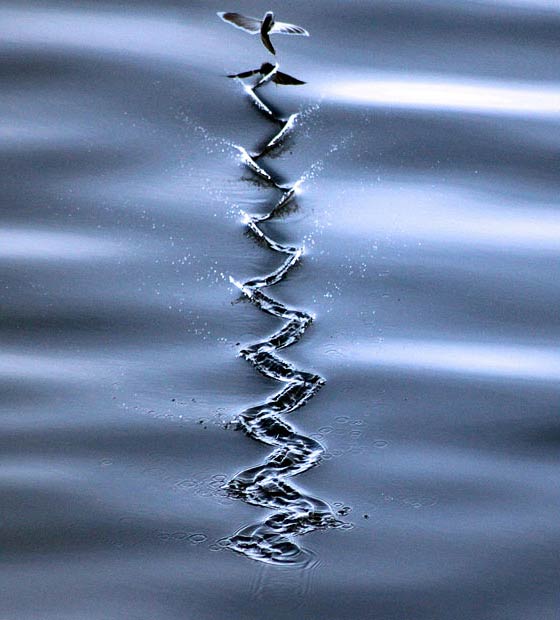
Two winged and four-winged flying fish
Flying fish are divided into two-winged and four-winged. Double-winged species measure 18 to 30 cm in length, while the four-winged species usually reach 38 cm.
The largest representative of the second group is the California flying fish (Cypselurus californicus), reaching 48 cm in length.
Diet
Flying fish do not belong to deep-sea fish, practically all the time swimming just below the surface of the water, so that they can quickly get into the air in the event of an attack from the intruder. They feed mainly on crustaceans and plankton, which is full in the upper levels of the oceans. They are considered omnivorous because they also eat plants and small animals. Some species even hunt for small fish. They can themselves become victims of tunas, dolphins, porpoises, marlins and octopuses.
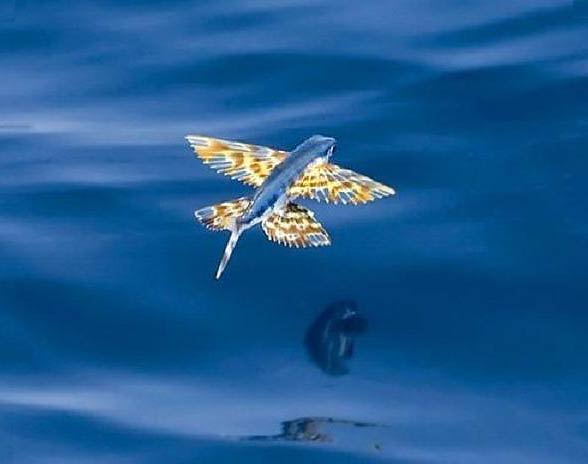
Reproduction
Flying fish are spawning in open oceans, usually among seaweed and other aquatic plants. Eggs are generally large, fertilized and have long fibers that anchor them on plants. Many times, huge schools were observed during the mating season, sometimes the size of the colony reached over a million individuals. The largest number of flying fish gathers between December and June, rarely between July and November.
The mating season usually starts in December, and the peak of this period is usually in June.

Importance in fishing and catering
These extraordinary fish are caught for commercial purposes in Japan, China and Vietnam, as well as Indonesia and India.
In Japanese cuisine, fish often dry out, and the roe of Japanese flying fish (Cheilopogon agoo) is used in some types of sushi known as tobiko. The roe from this fish is also the basis of the diet of the
Tao people of Orchid Island, located near Taiwan.
Flying fish are also part of the national dishes of Barbados called cou-cou. In the Solomon Islands, these fish are caught during their flight using special nets held from outrigger canoes; the best lure is torchlight, fishing takes place only on moonless nights.
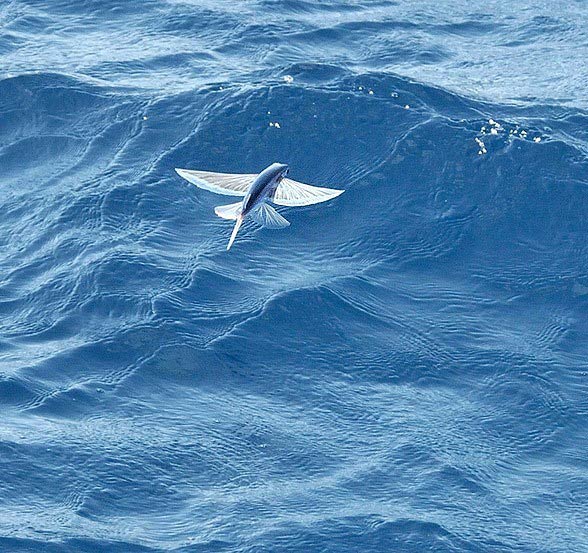
Detailed data / dimensions
Flying fish (Exocoetidae)
- Length: 18 – 45 cm (average 17 – 30 cm)
- Weight: 0.9 – 1 kg
- Maximum gliding speed: over 70 km/h (43 mph)
- Maximum stroke height above the water surface: 6 m (20 ft)
- Maximum length of the flight: approx. 200 m (double-winged fish); approx. 400 m (1,300 ft) – four-winged fish
- Flying fish can spend even 45 seconds in flight
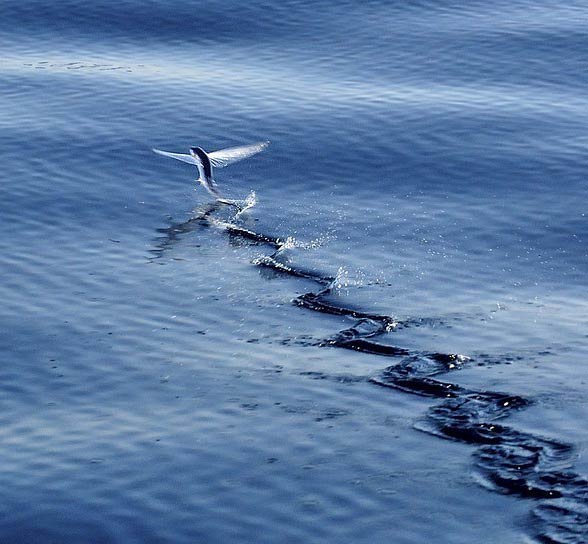
Flying fish – interesting facts
- During the jump, the flying fish moves its tail up to 70 times per second.
- The flights of flying fish are typically around 50 m (160 ft)
- It is estimated that the longest flight was over 400 m (1,300 ft).
- In May 2008, the Japanese NHK television filmed a flying fish called “Icarfish” off the coast of Yukushima Island, which flew for 45 seconds. The previous record holder “withstood” 42 seconds.
- From 1900 to 1930, flying fish were studied as possible prototypes of aircraft designs.
- In the past, Barbados was called the Land of Flying Fish, which today is the national animal of this country.
- Flying fish often “land” on boards of the boats during their jumps.
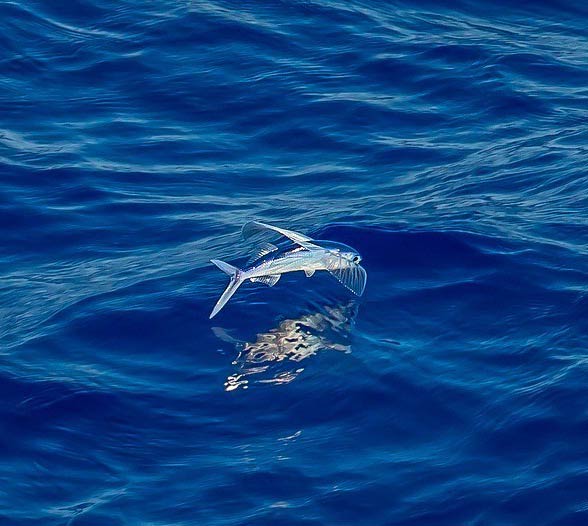
Recommended
- Marine
- Sharks – myths and facts
- Sharks – killers from the depths
- Great white shark
- Megalodon
- Whale shark – largest fish
- Basking shark – the second largest fish
- Greenland shark
- Hammerhead shark
- Tiger shark
- Longest whales
- Heaviest whales
- Largest sharks
- Extinct animals
- Animal fights
- American lion
- European cave lion
- Smilodon – Saber-toothed tiger
- Fastest animals
- Fastest birds

